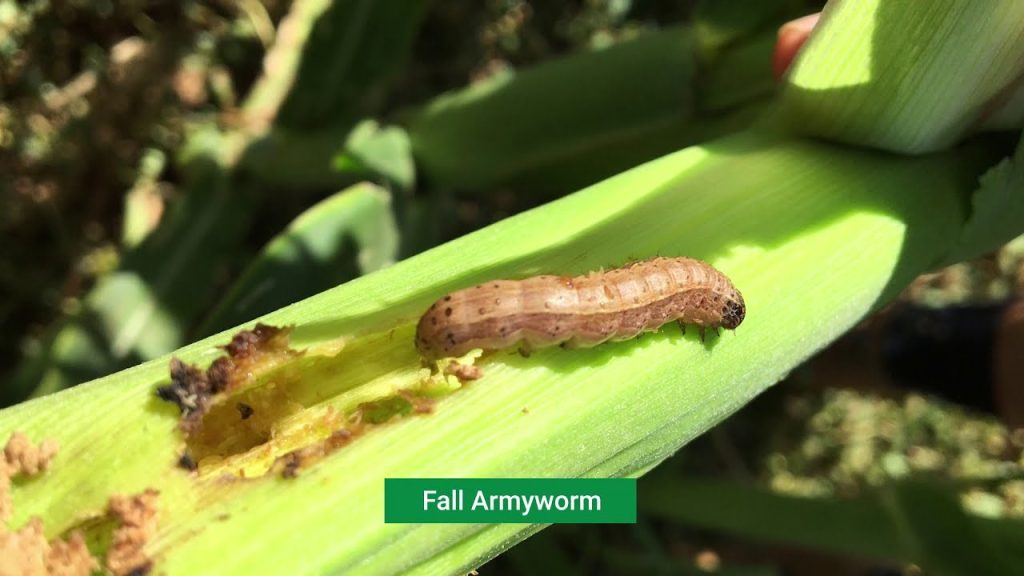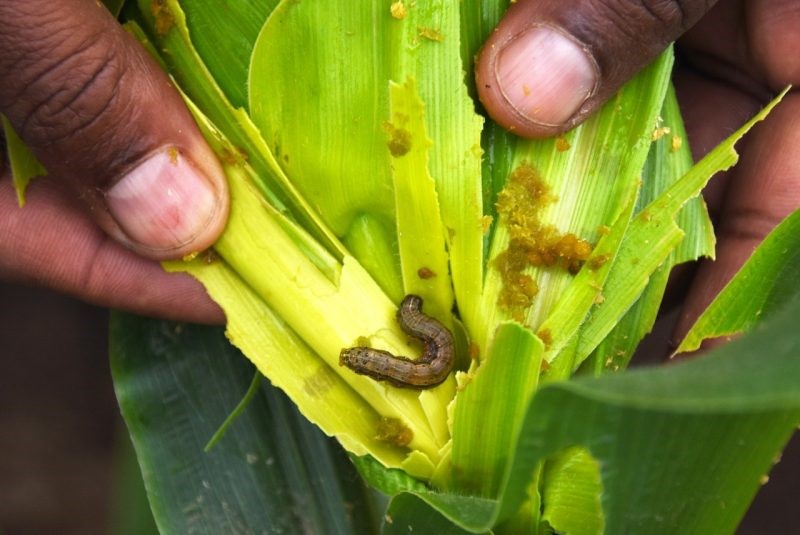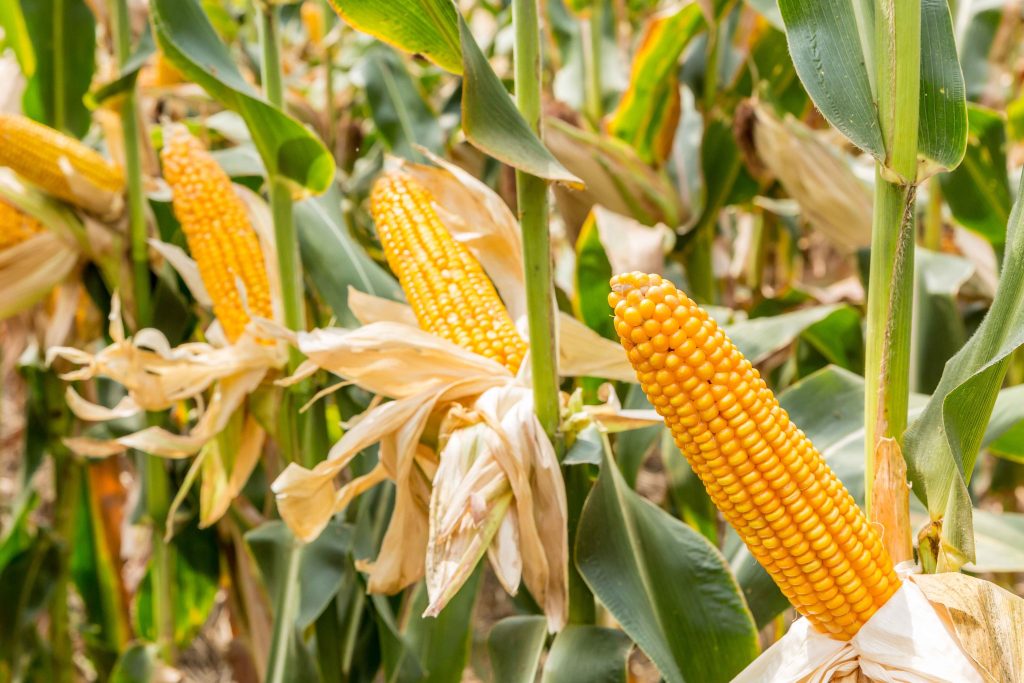
Soil Type: A variety of soils ranging from loamy sand to clay loam are all suitable for growing maize.
Land Preparation: Ploughing 2 to 3 times along with planking are sufficient to prepare the normal soils for soil growth.
Sowing Season:
Banu & D.I Khan Division
Detail: 1st to 30th July
Hybrid varieties sowing time in Malakand division
Detail: 1st June-30th June
Peshawar & Kohat Division
Detail: 20th June to 20th July
Spring maize sowing time
Detail: Feb to March
Swat & Hazara Division
Detail: 1st April to 30th June
Layout/Sowing Method
Row-Row distance: 75 cm
Plant -Plant distance: 15-25 cm
Irrigation
First Irrigation
Detail: After 10-15 days of germination
Irrigation at Flowering
Detail: Timely irrigation is important (half/low level irrigation twice in a week) during flowering stage.
Irrigation Interval
Detail: 10-15 Days (keeping in view environmental conditions)
Suitable Areas: Peshawar, Kohat, DI khan, Malakand, Hazara, Chitral, Swat, Dir upper, Dir Lower, Hangu, Mardan, Banu, Bonir, Noshehra, Mansehra, and FATA.
Verities: BABAR, JALAL, PAHARI, AZAM, 30Y87, Pioneer-3025, Pioneer-30K08, CS-200, CS-220, CS2Y10 (Yellow), Karamat, Iqbal.
Fertilizer: NPK: 69:46:25 kg/acre
Harvesting: 80-120 day after sowing
Production: 20-80 mond per acre
Maize Disease
1. Seed and seedling Diseases
Identification
- Identify sick seeds as they do not grow properly.
- If sick seeds grow, the plant will end up wilting and necrosis of plant may occur.
- Wilting of newly grown plants often occurs in the early stages of crop growth.
Management
- Plant resistant varieties of maize.
- Seed treatment with Toprin-M @ 2gm/kg of Seed.
2. Leaf Blight of Maize
Symptoms/Identification
- The disease appears first on lower leaves and then spreads on all the leaves.
- Brown oval shaped spots are produced which spread rapidly at 25-30C0.
- In Punjab, the attacks takes place on the crop when it’s nearing maturity.
Management
- Spray the fungicide Dithan M-45 @ 500gm / acre or Benlate 500gm/acre.
- Disarray the plant disease’s debris from the previous crops.
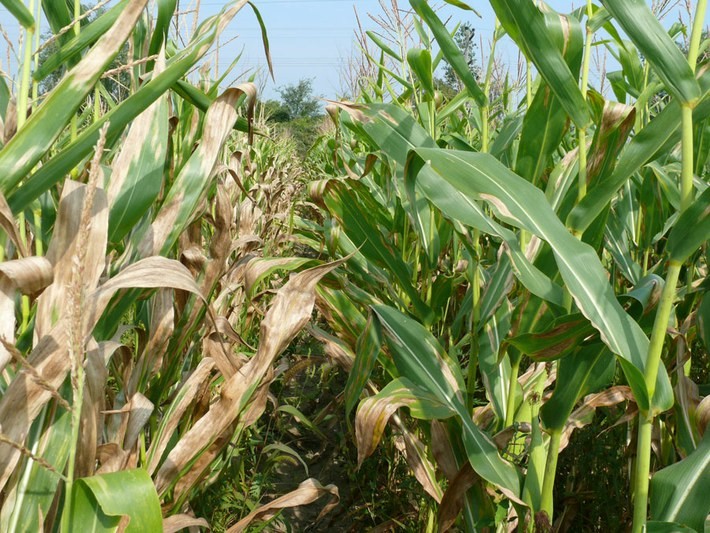
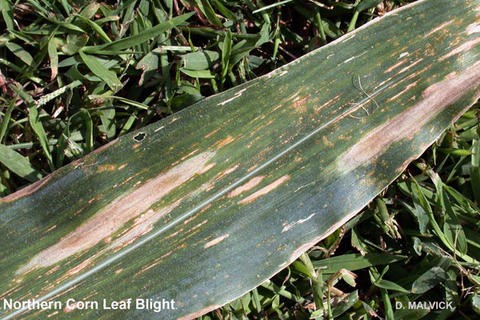
3. Stalk Rot
Symptoms/Identification
- Plants start rotting from their second internodes, leaves begin to turn pale, dry up and plants fall to the ground.
- When infected stalks are split, the phloem appears dark brown and the tissues turn brown while the pith is shredded off.
- Cobs droop down, grains of the cobs remain small which reduces production.
Management
- Seed treatment with Toprin-M @ 2gm/kg of seed.
- Plant resistant varieties of maize.
- Ridge sowing also increases the chances of reducing diseases.
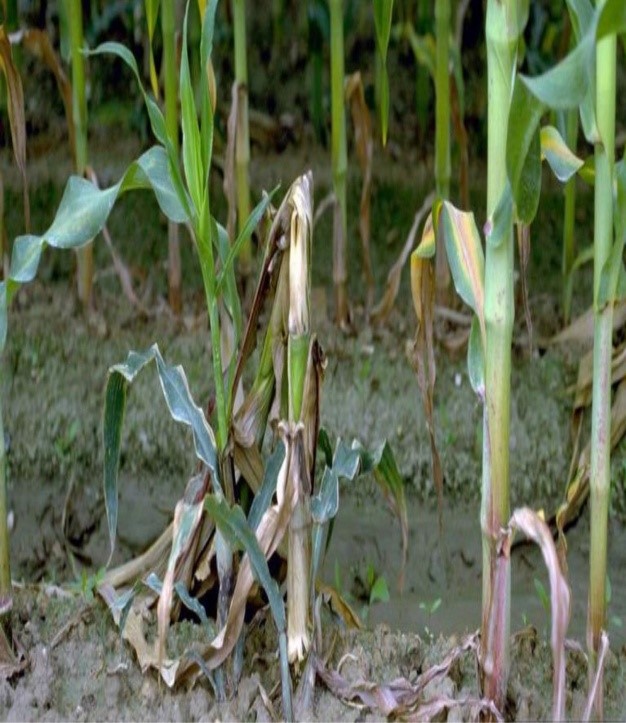
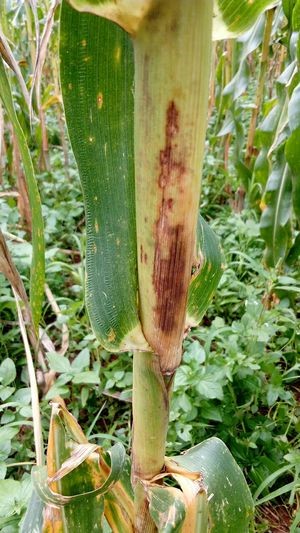
4. Ear Rot
Symptoms/Identification
- Fungi the root cause for ear rot.
- Infected kernels transform to a cottony growth on the crop.
- Often, light blue green or black powder-like fungi grows between the kernels or on the cob surface of maize.
Management
- Use resistant varieties or hybrids.
- After harvesting the crop, remaining parts of plants must be destroyed.
Moisture percentage should not be more than 12% when the harvested cobs are stored in the warehouses.
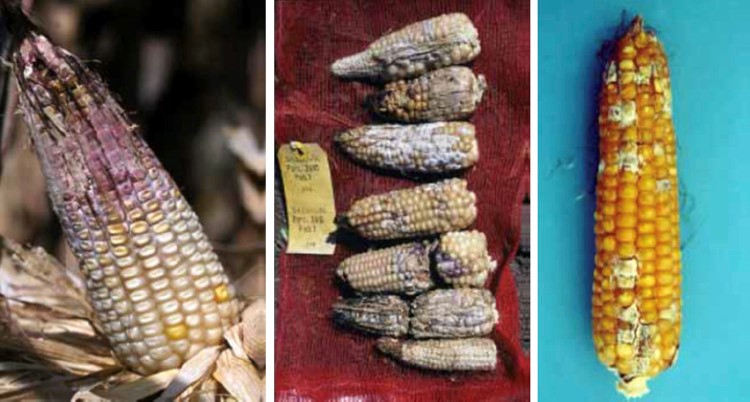
Insect Pest of Maize
- Termite
Identification
Similar to an ant, light yellow or brown in colour, commonly spotted in sandy areas.
Management
· Do not use raw compost of dung.
· Use fipronil 5SC at 1 liter or chlorpyrifos 40 EC at 1 to 1.5 liters per acre at the time of 1st irrigation or as soon as the attack begins.
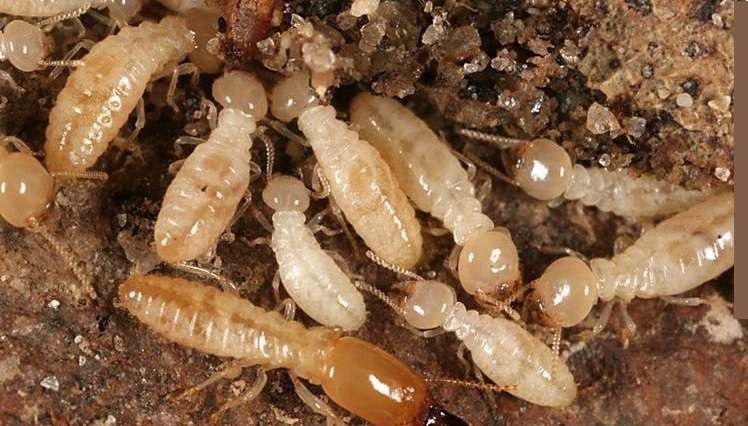
- Shoot fly Identification
The maggot first turns white and then light yellow and destroys the crop. Their life span is about 12 days and the adult maggot is similar to a house fly.
Management
Treat Seed with Clothianidin + Azoxystrobin 62.5% WS by 9 g or Imidacloprid + Tebuconazole 372.5 FS by 10 ml or Thiamethoxam 70 WS by seeding 3g
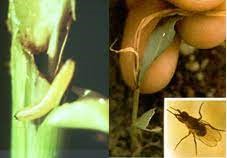
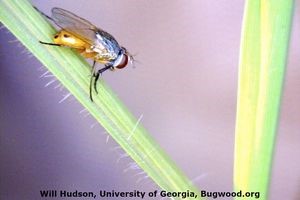
- Maize stem Borer
Identification
The moth is yellowish brown in colour and colour of the front wings is a double line of khaki black spots on the outer edges.
Management
Apply 20 Trichogramma cards per acre from the beginning of the crop and after every 10 to 15 days, keep changing the cards until the crop becomes mature.
As a protective measure, add granulated chemicals such as fipronil 0.3% G at 8 kg or Chlorantraniliprole + Thiamethoxam 0.6% G at 4 kg per acre of plant shoot and repeat the process as needed.
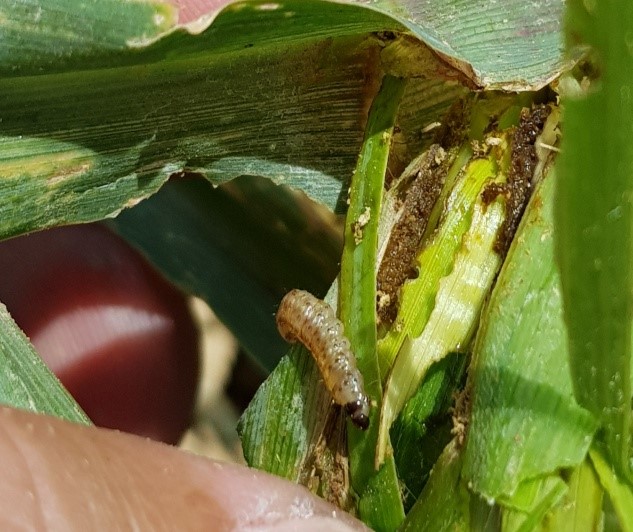
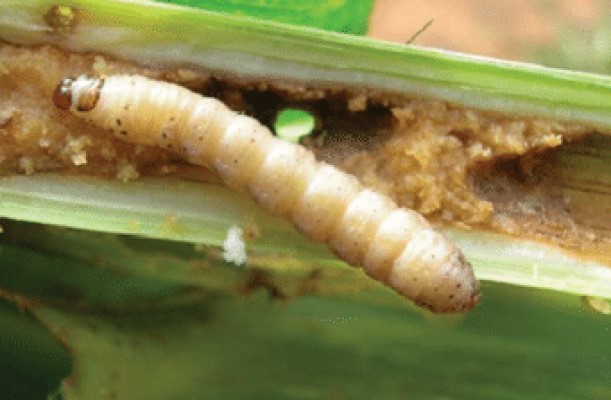
- Jassid
Identification
This insect travels rapidly from one place to another and it remains active throughout the year.
Management
Thiamethoxam 25WG at 24 g per acre or Carbosulfan 20EC at 500 ml per acre or Imidacloprid at 200 ml per acre.
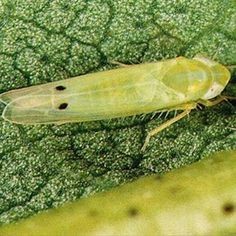
- Aphid
Identification
This insect is very small and green in colour. It is visible in the form of bunches on the leaves of plants, especially on the edge of leaves.
Management
Acetamiprid 20SP at 125 g per acre or Carbosulfan 20SC at 250 ml per acre or Imidacloprid 200SL at 200-250 ml per acre.
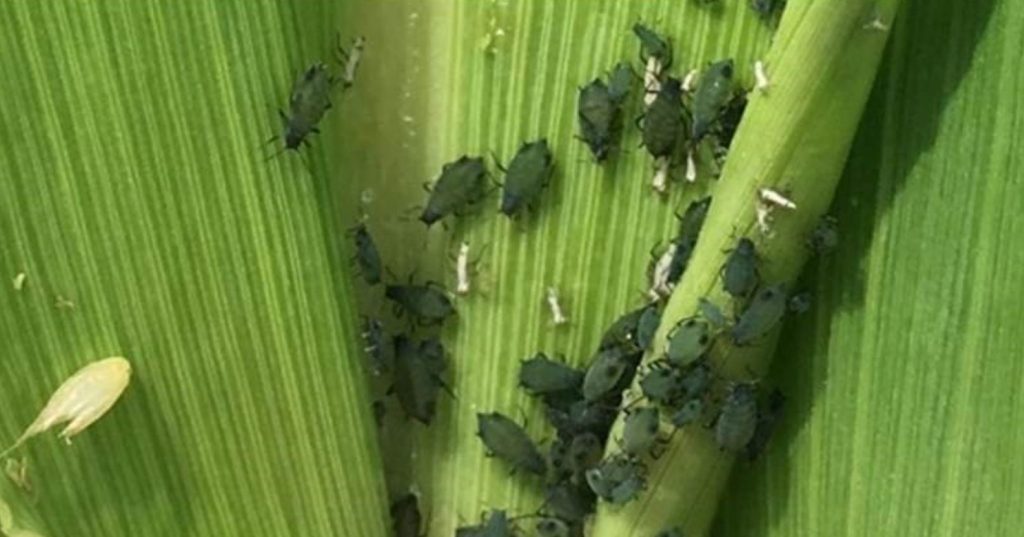
- Fall army worm
Identification
The first instar larvae is of light green and blackish brown shade. These larvae attack to get their food from the leaves. When these larvae reach their third instar, they start to have light yellow stripes on their bodies.
Management
Spray the spinetoram 120 SC at 80 ml per acre, spinosad 240 SC at 80 ml per acre, Chlorantraniliprole 200SC at 50 ml per acre, Emamectin Benzoate 1.9 EC at 200 ml per acre.
